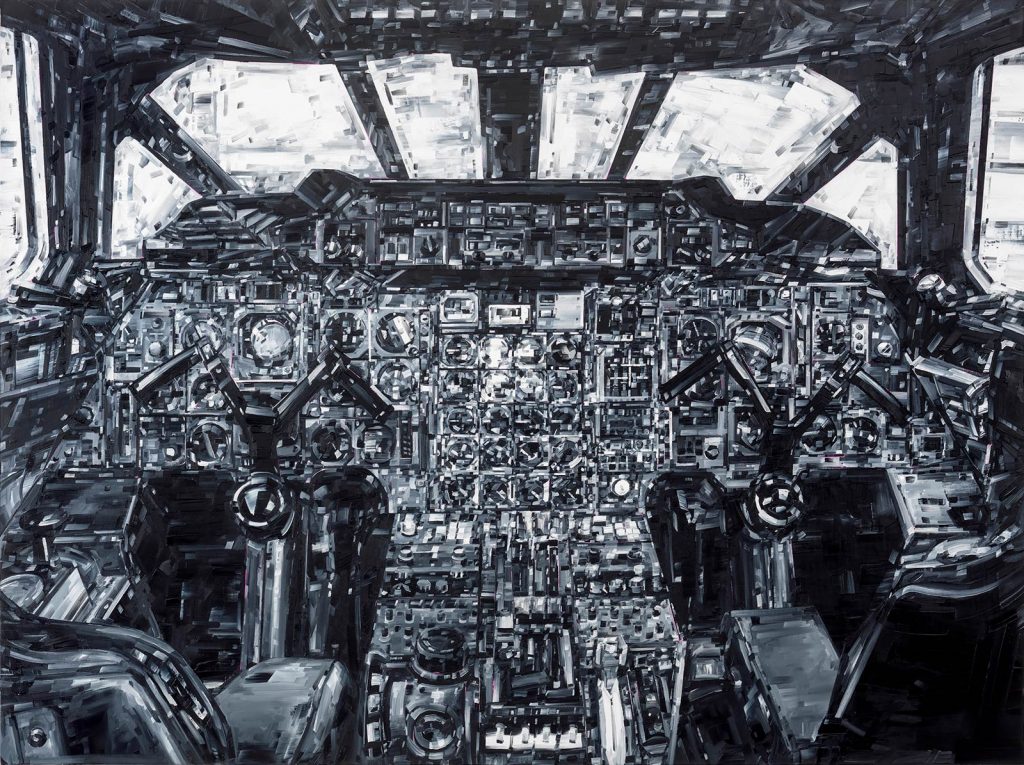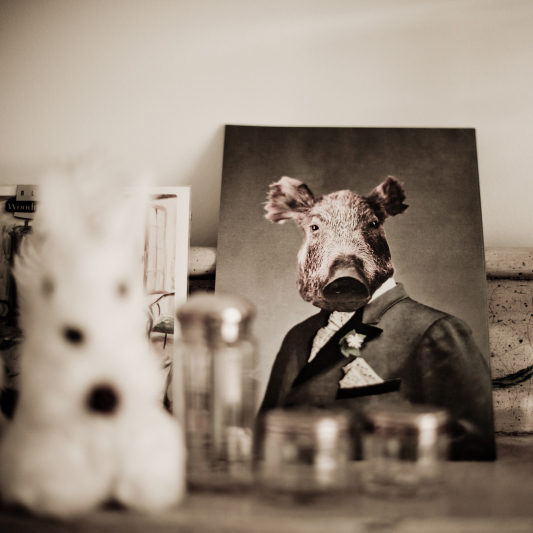Figurative Painter Joshua Press’ “Different Bodies” Exhibit at The Fitzrovia Gallery
Studies of form, light and color produced with impeccable precision

For one work in Joshua Press‘ debut solo exhibition Different Bodies, at The Fitzrovia Gallery, the London-based fine artist painted with the tip of a pin. It was the only way the meticulous figurative painter could translate the immensity of his source inspiration into a finished art piece. Antithetical to the selfie stations for social media that define today’s contemporary art scene, Press brings something profoundly historic to his work. And yet, to step toward the small paintings and drawings in this exhibit is to uncover a quietly bold and considered understanding of color and light. It’s a testament to his craft, which was honed through years of rigorous study across Italy and France, as well as in Jerusalem.

“This is a collection of work that I’ve made over the last three years,” Press tells us on a walk through of the long, slender gallery, where his paintings dot the walls in exact distances. “They’re all painted at my home, from the rooms that I live in, along with very close friends and family.” Each work was painted with the subject present—meaning, for instance, sessions with Press’ young god daughter were done in 90-minute sittings over six months.
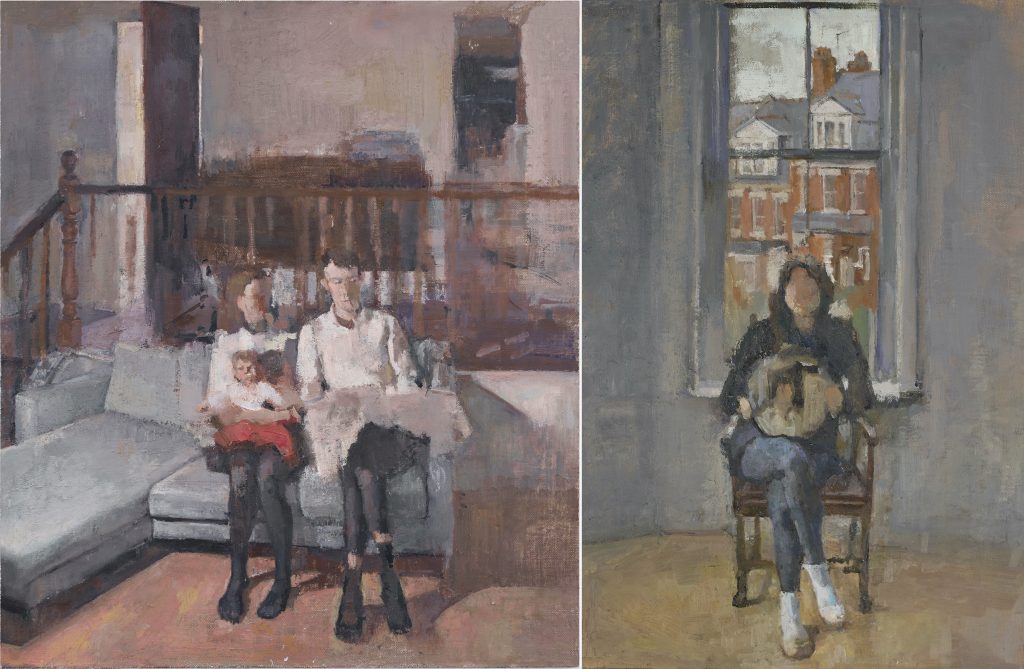
To look at the body as a whole, viewers will begin to piece together Press’ nuanced relationship to light—and how it affects his choice of color. Press studies the light before he can begin to see the colors within. “Painting in England,” he says, “the light is quite restricted. It’s gray a lot of the time. This means that the color scale is also quite restricted. Trying to convey tonality in painting with English light is often a case of having to restrain saturation to portray that subtle effect. Tonality is a big part of these paintings. I enjoy playing within these closer tonal relationships. I use color sparingly. I appreciate the more subdued qualities.”

Press predominantly works with oil on canvas, though there are three drawings in the exhibition. Brushstrokes harmonize to tell a story in his paintings. Layers contribute to texture. “A lot of the texture often comes from having to constantly rework things,” he says. “It’s how I am laying down the paint. I paint. I repaint. I repaint again. And again. I do so continuously until I find the right sort of equivalent to what I hope to get at.”
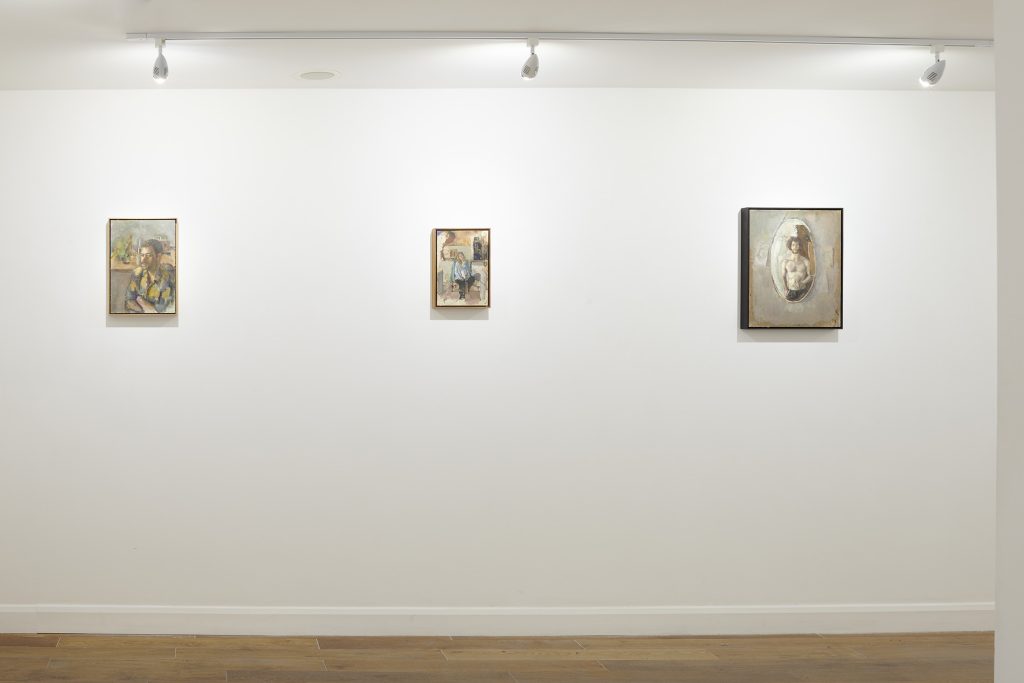
All of the aforementioned attributes come together in self-portraits and figurative works—but Press, similarly to the Old Masters, incorporates so much more. Windows and mirrors tell stories within stories. The architecture of London manifests as a backdrop beyond a few. “I like the idea of a play within a play,” he says.
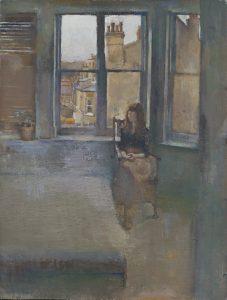
And from his characterizations, there is a balance between those with faces and those without. The faceless, or “the unadorned” as he calls them, tend to be more thought-provoking. “It freaks some people out,” Press says. “Some viewers need a more literal equivalent of people, whereas I think I like to make it explicit that painting people is about painting. It’s about the ideas of painting—the hierarchy and color, the quality of light. You can paint a very literal portrait of someone and it will have little to do with visual experience or perception.”
Press also rejects affixing any sentimental narrative onto his paintings. “I feel like I am quite a detached painter in many ways,” he says. “However, I do think some convey a part of the exchange [between artist and subject].”
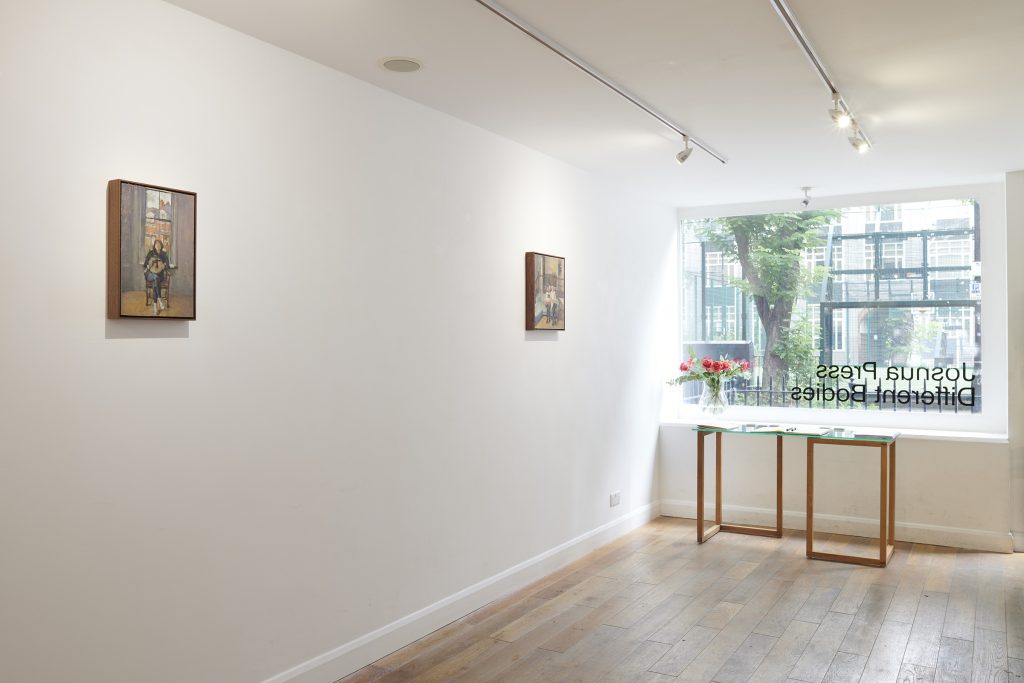
“There is a diaristic quality to this show, even more so to my sketchbook,” he says of why he chose to include the drawings. “Drawing is such a large part of what I do. I thought it was important to show that. They are very quick sketches. It’s just three of them but I have books full of them.” As for the entire curation, he adds that the works were selected because “I felt if I didn’t let them breathe I would end up feeling strange about them. They needed to be seen.” From Press’ self-portraiture to side-by-side depictions of one figure painted a year apart, all the works in the exhibition do more than tell individual stories; together, they sing of the passion of a young painter, his fixations and his process.
Install images courtesy of The Fitzrovia Gallery
